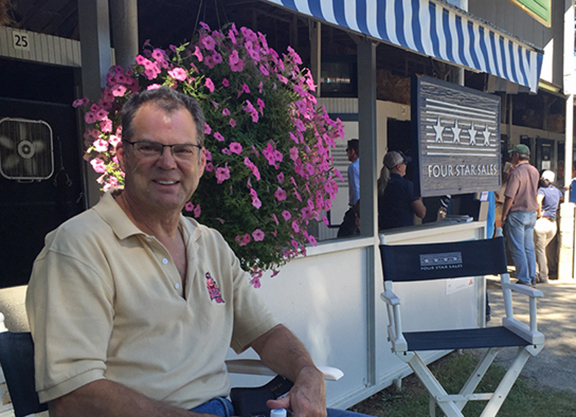By Dan Liebman
25 years ago, Keeneland asked me to conduct handicapping seminars for beginners. You know–how to read the program and tote board, how to place a wager, what the difference is between win, place and show.
Each Saturday, I would receive questions and every week, among them was: How long is a furlong? Do you have any tips? What is the most important part of handicapping? The answers were: an eighth of a mile; the burgoo and corned beef; and wagering and money management.
A blank stare would follow wagering and money management?
In the case of a beginner, money management might be as simple as this…you attend the races feeling you can lose $100 and have a fun day. If you are behind by $200 after four races, you have messed up.
For an experienced handicapper, picking winners is one thing. Betting winners, and optimizing the chances to make money from them, are different things altogether. If you tell me we are going to the races tomorrow and we're going to wager on every race, I know I will have a hard time making money. My method has always been to handicap every race, pick out a few that catch my eye, and see if I can figure out how to make money from them.
For a handicapper, the Breeders' Cup races are such a fascinating challenge. There are top runners in every field, horses from various parts of the country, and shippers from Europe. Leading trainers, leading jockeys…great handicapping experiences.
That being said, you still approach them the same as any other two cards of racing
On Friday, my top picks were Rushing Fall and Elate. Neither, obviously, was going to be a huge price. So while I wagered money to win on both, I thought I could catch a decent pick three price if I wheeled Rushing Fall.
A simple wager where you use one horse (Rushing Fall) in one race with every horse in the other two races. If Rushing Fall wins, you sit back and root for longshots in the next two races.
Some handicappers shy from wheeling horses, figuring they are always astute enough to trim down the choices in both horizontal and vertical wagers. I, too, often part-wheel horses when making exotic wagers, though I am never hesitant to simply key, or wheel a horse I feel strongly about.
Rushing Fall (3-1) ran exactly as I hoped and Battle of Midway won the following race, the Dirt Mile, at 14-1. The pick three was going to be profitable, but a longshot in the third leg could really pay off. The next winner was Mendellsohn (Juvenile Turf), who in a great betting race was the $4.80-1 favorite.
The $1 pick three wheel, which cost $140, returned $725.40.
Elate finished fourth as the 2-1 favorite in the Distaff, but it was a profitable day and my top pick overall in the Breeders' Cup races–Caledonia Road–was the following day. My other two picks Saturday were Cambodia and Gun Runner.
Knowing Caledonia Road would be a generous price (I figured 20-1; she ended up 17) in the Juvenile Fillies, I decided to make four wagers: win; superfecta key; trifecta wheel; and pick three wheel. I simply didn't have a strong feeling as to who would run second in her race or who would win the two subsequent races. Wheeling seemed like the best option.
Handicappers hate to count their money too soon, but down the backside I felt confident I had wagered on the winner. The race was for second and I had used four horses in that spot in the superfecta–but not Alluring Star.
I had to “settle for” having a $4,579.90 trifecta.
At this point, I had to jump in my truck and take off to deliver a catering order. My mind was, pardon the pun, racing, pleased that my best bet of the weekend had just won and paid $36.60 (for the record she also paid nicely to place and show, $15.40 and $9.80, though I never make those wagers).
Being a fan of Lady Aurelia, I knew if she won the Turf Sprint the pick three payoff would plummet, so I was pleasantly surprised when my son texted me that Stormy Liberal had won at 30-1. No matter who won the third leg of the pick three, it was going to be a nice payoff. I had handicapped the Filly & Mare Sprint, a race I thought was wide open. My selection was Skye Diamonds.
When my son called while I was still driving, I couldn't even recall Bar of Gold, but then I remembered seeing her run at Keeneland in the Spinster.
“She was 60-1,” my son said. Well actually $66.70-1.
The payoff was $29,340.10, making the profit on the wager $29,172.10.
I did wager on Cambodia, who ran a bang up race to finish third in the Filly & Mare Turf, and on Gun Runner, whose win in the Classic gave me the superfecta when I keyed him over just four horses and three of them waltzed in behind him.
There is extra satisfaction in hitting a large wager on one of racing's biggest days. Though the money is just as green cashing the same wager on a weekday card at any racetrack, the Breeders' Cup races provide extra incentive to handicappers. The key, I've found, is to use the same handicapping methods on big days that work for you on other days as well.
A leading breeder once told me his mating method was simple: I look at what has worked for me in the past and try to repeat it.
For me, it is the same thing with handicapping.
Not a subscriber? Click here to sign up for the daily PDF or alerts.






